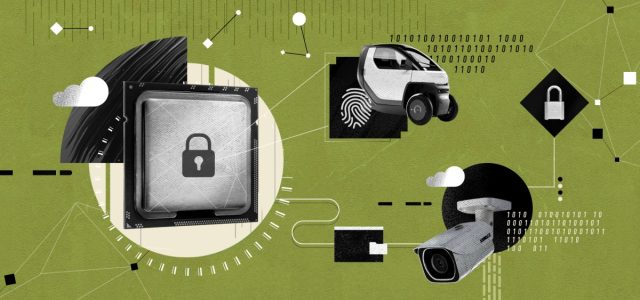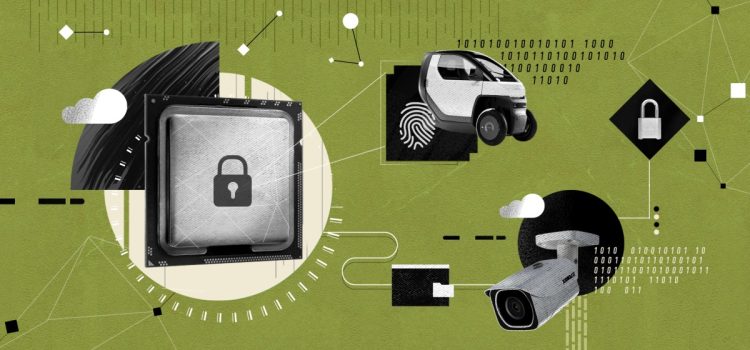


Join top executives in San Francisco on July 11-12, to hear how leaders are integrating and optimizing AI investments for success. Learn More
Seventy-five percent of enterprises are pursuing vendor consolidation, up from 29% just three years ago, with secure access service edge (SASE) experiencing significant upside growth as a result. SASE is also proving effective at improving enterprise security postures by providing zero trust network access (ZTNA) at scale.
CIOs tell VentureBeat SASE is getting traction because of its potential to streamline consolidation plans while factoring in ZTNA to the endpoint and identities.
“If I have five different agents, five different vendors on an endpoint, for example, that’s much overhead support to manage, especially when I have all these exceptional cases like remote users and suppliers. So number one is consolidate,” Kapil Raina, vice president of zero trust, identity, and data security marketing at CrowdStrike, told VentureBeat during a recent interview.
Nearly all cybersecurity leaders have consolidating tech stacks on their roadmaps
Leading cybersecurity providers, including CrowdStrike, Cisco, Fortinet, Palo Alto Networks, VMware and Zscaler, are fast-tracking product roadmaps to turn consolidation into a growth opportunity. Nearly every CISO VentureBeat spoke with mentions consolidation as one of their top three goals for 2023.
Event
Transform 2023
Join us in San Francisco on July 11-12, where top executives will share how they have integrated and optimized AI investments for success and avoided common pitfalls.
That’s a point not lost on cybersecurity industry leaders. Cynet’s 2022 survey of CISOs found that nearly all have consolidation on their roadmaps, up from 61% in 2021. CISOs believe consolidating their tech stacks will help them avoid missing threats (57%) and reduce the need to find qualified security specialists (56%) while streamlining the process of correlating and visualizing findings across their threat landscape (46%).
At Palo Alto Networks’ Ignite ’22 conference last year, Nikesh Arora, Palo Alto Networks chairman and CEO, shared the company’s vision for consolidation — and it’s core to the company’s strategy.
Nikesh added that “customers are actually onto it. They want the consolidation because right now, customers are going through the three biggest transformations ever: They’re going to network security transformation, they’re going through a cloud transformation, and [though] many of them don’t know [it] … they’re about to go to a security operations center (SOC) transformation.” Ignite ’22 showed Palo Alto Networks doubling its R&D and DevOps teams fast-tracking Prisma SASE with new AI-based enhancements.

SASE grows when network and security tech stacks consolidate
Legacy network architectures can’t keep up with cloud-based workloads, and their perimeter-based security is proving to be too much of a liability, CIOs and CISOs tell VentureBeat anonymously. The risk levels rise to become board-level concerns that give CISOs the type of internal visibility they don’t want. In addition, the legacy network architectures are renowned for poor user experiences and wide security gaps. Esmond Kane, CISO of Steward Health, advises: “Understand that — at its core — SASE is zero trust. We’re talking about identity, authentication, access control and privilege. Start there and then build out.”
Gartner’s definition of SASE says that “secure access service edge (SASE) delivers converged network and security-as-a-service capabilities, including SD-WAN, SWG, CASB, NGFW and zero trust network access (ZTNA). SASE supports branch offices, remote workers, and on-premises secure access use cases.
“SASE is primarily delivered as a service and enables zero trust access based on the identity of the device or entity, combined with real-time context and security and compliance policies.”
Foundations of SASE
Gartner developed the SASE framework in response to a growing number of client inquiries about adapting existing networking and cybersecurity infrastructure to better support digitally driven ventures.
Enterprises are on the hunt for every opportunity to consolidate tech stacks further. Given SASE’s highly integrated nature, the platform delivers the opportunities CIOs and CISOs need. Combining network-as-a-service and network-security-as-a-service to deliver SASE is why the platform is capitalizing on consolidation so effectively today.

To become more competitive in SASE without committing all available DevOps and R&D resources to it, nearly all major cybersecurity vendors rely on joint ventures, mergers and acquisitions to get into the market quickly. Cisco’s acquisition of Portshift, Palo Alto Networks’ acquisition of CloudGenix, Fortinet’s acquisition of OPAQ, Ivanti’s acquisition of MobileIron and PulseSecure, Check Point Software Technologies’ acquisition of Odo Security, ZScaler’s acquisition of Edgewise Networks and Absolute Software’s acquisition of NetMotion are just a few of the mergers designed to increase SASE vendors’ competitiveness.
“One of the key trends emerging from the pandemic has been the broad rethinking of how to provide network and security services to distributed workforces,” writes Garrett Bekker, senior research analyst, security at 451 Research, part of S&P Global Market Intelligence, in the 451 Research note titled “Another day, another SASE fueled deal as Absolute picks up NetMotion.” Garrett continues, “this shift in thinking, in turn, has fueled interest in zero-trust network access (ZTNA) and secure access service edge.”
SASE’s identity-first design further accelerates consolidation
For an SASE architecture to deliver on its full potential of consolidating network and security services to the tech stack level, it must first get real-time network activity monitoring and role-specific ZTNA access privileges right. Knowing in real time what’s happening with every endpoint, asset, database and transaction request to the identity level is core to ZTNA. It is also essential for continually improving ZTNA security for distributed edge devices and locations.
ZTNA secures every identity and endpoint, treating each as a security perimeter with multiple digital identities that need constant monitoring and protection.
SASE is helping close the gaps between network-as-a-service and network security-as-a-service, improving enterprise networks’ speed, security and scale. ZTNA and its related technologies protect endpoints. The increasing number of identities associated with each endpoint increases the risk of relying on legacy network infrastructure that relies only on perimeter-based protection. This is one place SASE and ZTNA are proving their worth.

VentureBeat’s mission is to be a digital town square for technical decision-makers to gain knowledge about transformative enterprise technology and transact. Discover our Briefings.
